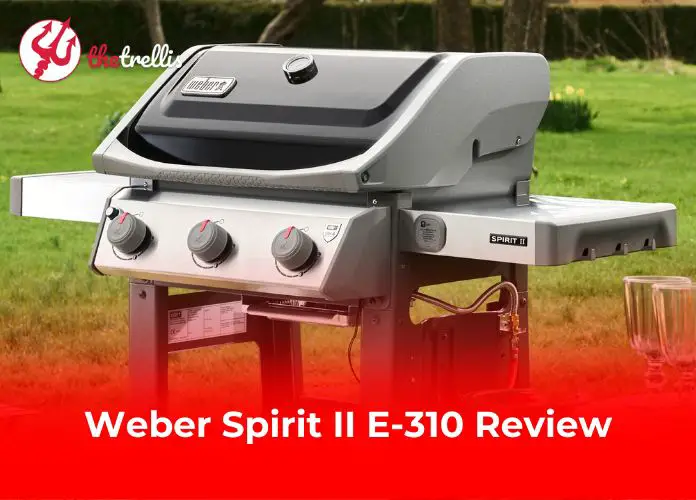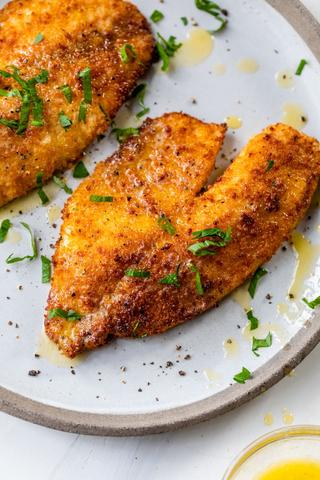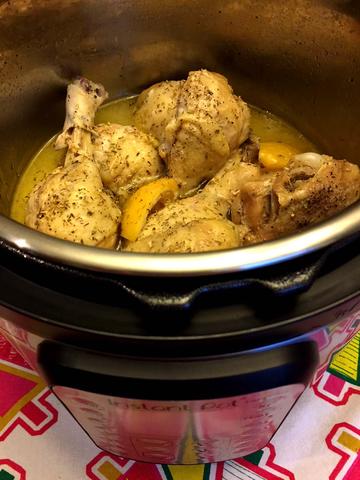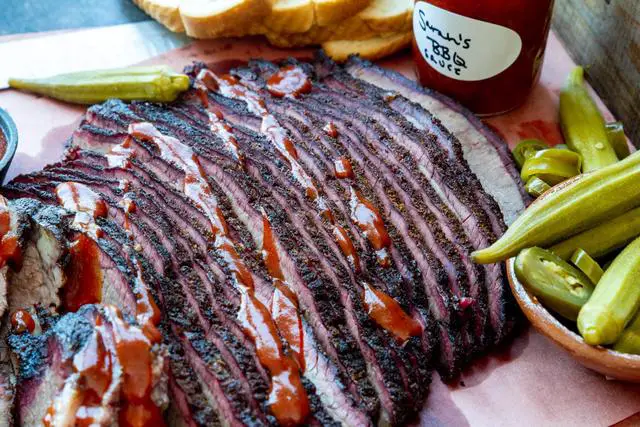
Smoking brisket to perfection requires time and patience. Discover the ideal duration for smoking this mouthwatering meat with our comprehensive guide. Whether you’re a seasoned pitmaster or a novice griller, master the art of smoking brisket and achieve tender, flavorful results every time.
Why Is There A Range For Brisket Smoke Time?

The range for brisket smoke time is due to several factors that can affect the cooking process. Different smokers may handle the smoking process differently, leading to variations in cooking time. Additionally, not all briskets are the same, and factors such as size and marbling can impact cooking time. The temperature at which the brisket is smoked also plays a role, with different pitmasters preferring different temperatures.
Smoking a brisket low and slow allows for the breakdown of connective tissue and collagen, resulting in a tender and juicy meat. However, this process takes time and requires patience. Smoking at higher temperatures can shorten the cooking time but may sacrifice some smoke flavor. The weight and thickness of the brisket can also affect cooking time.
Overall, the range for brisket smoke time provides flexibility based on individual preferences, equipment used, and desired outcome.
Why Does It Take So Long To Smoke A Brisket?
Smoking a brisket takes a long time because it is a tough cut of meat with a lot of connective tissue. The collagen in the meat needs to break down slowly over time in order for the brisket to become tender and juicy. Smoking the brisket at a low temperature allows this breakdown process to happen gradually, resulting in a melt-in-your-mouth texture.
In addition, different factors such as the type of smoker used, the temperature at which it is smoked, and the size and thickness of the brisket can all affect the cooking time. Smokers that regulate temperature more effectively may cook the brisket faster, while fluctuations in temperature can prolong the smoking process. Thicker cuts of brisket may also take longer to cook than thinner ones.
The stall stage during smoking, where the internal temperature of the brisket plateaus for a period of time, can also contribute to the overall cooking time. Wrapping the brisket tightly with butcher paper or aluminum foil can help shorten this stall and speed up the cooking process.
Different Smokers
When it comes to smoking brisket, different types of smokers can affect the cooking time. Some smokers, like pellet grills or electric smokers, have temperature control features that help regulate the cooking process. These types of smokers may result in a more consistent smoking time. On the other hand, smokers like offsets or charcoal smokers may have fluctuations in temperature, which can potentially lead to longer smoking times. Some smokers also use water pans to help regulate temperature and catch drippings.
The temperature at which you smoke your brisket can also impact the cooking time. Different pitmasters recommend different temperatures for smoking brisket. Some prefer lower temperatures around 225°F for a longer cooking time, as it allows for more smoke flavor and helps break down the connective tissue in the brisket. Others opt for higher temperatures around 250°F to shorten the cooking time while still achieving tender results. The choice of temperature depends on personal preference and desired outcome.
Several factors can influence the cooking time of a brisket. The size and thickness of the brisket play a role, with thicker cuts taking longer to cook than thinner ones of the same weight. The amount of marbling in the meat can also impact cooking time. Additionally, each individual smoker may have its own unique characteristics that affect how long it takes to smoke a brisket.
Different Smoking Temperature
When it comes to smoking a brisket, different temperatures can affect the cooking time. Some pitmasters prefer to smoke at 225°F, while others choose 250°F or higher. The temperature you select will impact the amount of time it takes to smoke your brisket. Higher temperatures can shorten the cooking time, but lower temperatures often result in more smoke flavor.
The size and thickness of your brisket can also affect the smoking time. A thicker brisket may take longer to cook than a thinner one, even if they weigh the same. Additionally, the marbling of the brisket can influence cooking time as well. It’s important to monitor the internal temperature of your brisket using a meat thermometer to ensure it reaches around 200°F for optimal tenderness.
The type of smoker you use can also impact how long it takes to smoke a brisket. Some smokers, like pellet grills or electric smokers, self-regulate the temperature and provide more control. Others, such as offsets or charcoal smokers, may have more temperature fluctuations and potentially longer smoking times. Using water pans in certain smokers can help regulate temperature and catch drippings.
During the smoking process, you may encounter a stall when the internal temperature of the brisket stops rising for an extended period of time. This occurs due to moisture evaporating from the meat, which cools it down and slows down cooking. To overcome this stall and shorten smoking time, you can tightly wrap the brisket with food-grade pink butcher paper or aluminum foil. Wrapping prevents moisture from evaporating, reducing the stall duration but potentially affecting bark texture.
In some cases, pitmasters opt for a hot and fast method to speed up the smoking process. This involves cooking the brisket at temperatures between 275°F and 300°F, resulting in a shorter cooking time of less than an hour per pound. However, this method may produce a different flavor profile compared to traditional low-and-slow smoking.
Different Briskets
When it comes to smoking a brisket, not all briskets are the same. Different pitmasters smoke at different temperatures and use different smokers, which can result in a variety of brisket cooking times. Additionally, the size and marbling of the brisket can also affect the cooking time.
For more consistent smoking times, it is helpful to purchase similar-sized briskets and trim them in the same way. However, this may not always be possible or practical for home cooks. Therefore, it is important to pay attention to the internal temperature of the brisket to ensure it is cooked properly.
When Determining The Brisket Smoking Time, Don’t Forget To Hold
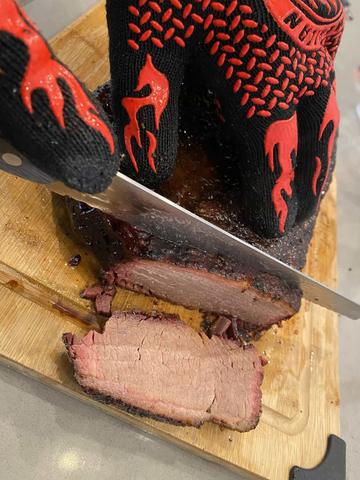
Smoking a brisket requires patience and careful consideration of various factors. As a general rule, it takes approximately one to two hours per pound of brisket to smoke. This means that a 10-pound brisket can take anywhere between 10 and 20 hours to smoke. The wide range of time is due to several variables, including the type of smoker used, the temperature at which it is smoked, and the characteristics of the brisket itself.
Brisket is best when smoked low-and-slow, allowing the connective tissue to break down and create a tender and juicy meat. It is recommended to use a meat thermometer to monitor the internal temperature of the brisket, aiming for around 200°F for optimal tenderness. Cooking at too high of a temperature or reaching the desired internal temperature too quickly can result in dry meat or an overly charred exterior.
The type of smoker used can also affect the smoking time. Some smokers have better temperature regulation than others, which can impact how long it takes to smoke a brisket. Additionally, different pitmasters may prefer different smoking temperatures, with some opting for 225°F while others go for higher temperatures like 250°F. These variations in temperature can influence the overall smoking time.
How Long To Smoke A Brisket At 225°F?
When smoking a brisket at 225°F, it will take between an hour and a half to two hours per pound. This low temperature allows the smoke to envelop the brisket, creating a flavorful bark and tenderizing the connective tissue. However, this slow cooking process means that it will take time to achieve that perfectly smoked brisket. If you’re smoking a large brisket, be prepared for a longer cooking time.
If you’re short on time and don’t want to wait for hours on end, you can increase the temperature of your smoker to speed up the cooking process. Smoking a brisket at 250°F will take around an hour and a half per pound. While this higher temperature may sacrifice some smoke flavor, it can significantly reduce the overall cooking time without compromising too much on taste.
Remember to keep an eye on the internal temperature of the brisket using a meat thermometer. You’ll want to cook the brisket until it reaches an internal temperature of around 200°F for optimal tenderness. And don’t forget to factor in resting or holding time after removing the brisket from the smoker to allow the protein fibers to relax and reabsorb moisture.
How Long To Smoke A Brisket At 250°F?
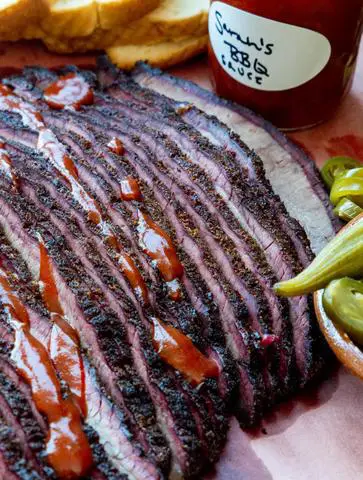
Smoking a brisket at 250°F will take around an hour and a half per pound. This higher temperature can help shorten the overall smoking time without sacrificing too much in terms of smoke flavor. It’s a good option if you’re looking to save some time while still achieving tender and flavorful brisket.
However, it’s important to note that smoking at this higher temperature may result in a slightly different flavor profile compared to low-and-slow smoking. Some people describe the taste as more similar to roast beef or steak rather than traditional smoked brisket. So if you’re aiming for that classic smoky flavor, you might want to consider smoking at a lower temperature.
How Can I Shorten My Brisket Smoking Time?
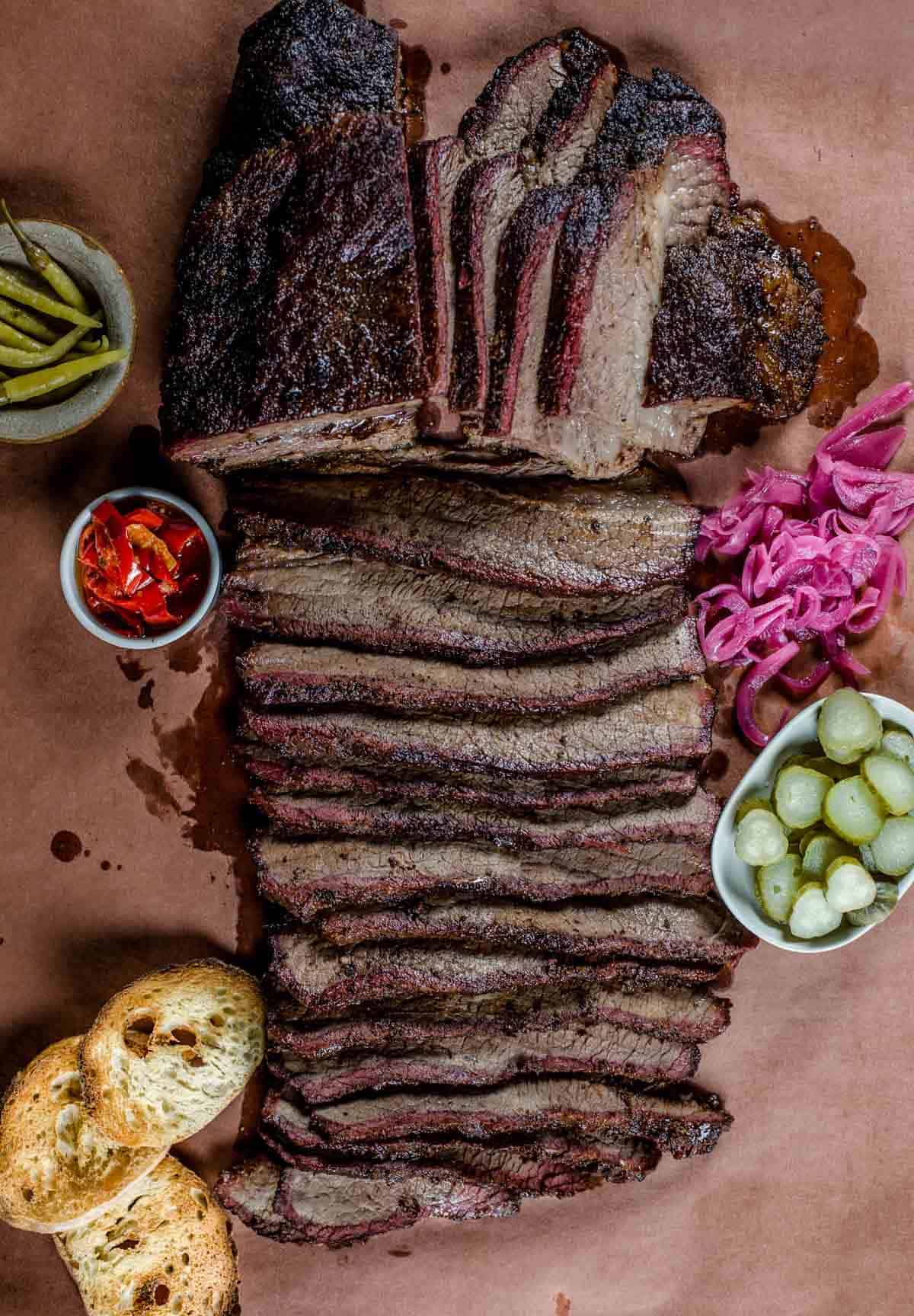
If you’re looking to shorten your brisket smoking time, there are a few strategies you can try. One option is to choose smaller briskets, as they will cook faster than larger ones. However, this may not be a practical solution if you need to feed a large group or want leftovers.
Another method is to increase the temperature of your smoker. Smoking at 250°F instead of the traditional 225°F can shave off some time without sacrificing too much smoke flavor. This higher temperature will still allow the connective tissue in the brisket to break down and produce tender meat.
If you want to speed up the cooking process even further, you can consider smoking your brisket hot and fast. This involves cooking the brisket at temperatures between 275°F and 300°F, which can reduce the overall cooking time to under an hour per pound. However, be aware that smoking hot and fast may result in a different flavor profile compared to traditional low-and-slow smoking.
1. Wrap During The Stall
When smoking a brisket, you will encounter the stall, which is when the internal temperature of the brisket stops rising and stays steady for a long time, usually around 160°F. To get through the stall more quickly and shorten the smoking time, you can tightly wrap the brisket with either food-grade pink butcher paper or aluminum foil. Wrapping the brisket prevents moisture from evaporating, which is what causes the stall. However, it’s important to wait until the bark sets up before wrapping the brisket to avoid softening the crust.
If you’re looking to shorten the smoking time for your brisket, you can increase the temperature of your smoker. Smoking at 275°F to 300°F allows you to cook a brisket in under an hour per pound while still achieving tender meat. However, smoking at higher temperatures may result in less smoke flavor compared to low-and-slow cooking.
To make your smoking time more consistent, consider purchasing similar-sized briskets and trimming them in a similar way. This helps ensure that all your briskets cook at a similar rate and reduces variations in cooking times.
2. Smoking Hot And Fast Brisket
Smoking a brisket hot and fast is an alternative method to cooking the brisket quickly. This technique involves smoking the brisket at higher temperatures, usually between 275°F and 300°F. Unlike traditional low-and-slow smoking, hot and fast cooking can yield a tender brisket in under an hour per pound.
However, smoking a brisket hot and fast may result in a different flavor profile compared to low-and-slow smoking. Some people find that the brisket tastes more like roast beef or steak rather than the traditional smoky flavor associated with barbecue. It’s important to note that this method may not be suitable for everyone’s taste preferences.
Wrapping It Up
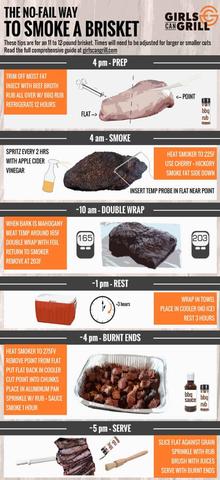
In conclusion, the smoking time for a brisket can vary depending on several factors such as the size of the brisket, the type of smoker used, and the temperature at which it is smoked. As a general rule of thumb, it takes about one to two hours per pound of brisket. However, this is just an estimate and there are many variables that can affect the cooking time.
The type of smoker used can play a role in how long it takes to smoke a brisket. Some smokers self-regulate the temperature, while others may have more fluctuations. Higher temperatures can shorten the cooking time, but lower temperatures tend to produce more smoke flavor.
It’s important to keep an eye on the internal temperature of the brisket using a meat thermometer. The collagen and connective tissue in the brisket don’t fully break down until around 200°F internal temperature. Cooking too quickly at too high of a temperature can result in dried out or overcooked meat.
When calculating the total smoking time for a brisket, it’s also important to account for resting or holding time after removing it from the smoker. This allows for carryover cooking and allows the protein fibers in the meat to relax and reabsorb moisture.
In summary, smoking a brisket requires patience and careful monitoring of temperatures. By considering these factors and making adjustments as needed, you can achieve tender and flavorful smoked brisket.
FAQs:

1. Should I smoke my brisket fat side up or down?
2. What’s the best wood for smoking brisket?
3. What’s the best recipe for smoked brisket?
4. Should I put barbecue sauce on my brisket?
5. Should I let my brisket come up to room temperature before putting it on the smoker?
6. What is the best temperature to smoke a brisket at?
7. How long do you smoke brisket before wrapping?
Question: Should I Smoke My Brisket Fat Side Up Or Down?
Question: Should I Smoke My Brisket Fat Side Up Or Down?
When it comes to smoking brisket, one common question that arises is whether to smoke it fat side up or down. The answer to this question is a matter of personal preference. Smoking the brisket fat side up can allow the fat to slowly render and baste the meat as it cooks, leading to a more moist and flavorful end result. On the other hand, smoking the brisket fat side down can act as a shield, protecting the meat from direct heat and potentially preventing it from drying out.
Ultimately, the decision of whether to smoke your brisket fat side up or down will depend on your own preferences and experiences. It may be worth trying both methods and seeing which one yields the desired results for you.
Question: What’s The Best Wood For Smoking Brisket?
The choice of wood for smoking brisket can greatly impact its flavor profile. Some popular options for smoking brisket include oak, hickory, mesquite, and pecan. These woods offer distinct flavors that can complement the rich taste of brisket.
Oak is known for its mild smokiness and is often used in traditional Texas-style barbecue. Hickory provides a stronger smoke flavor that pairs well with beef. Mesquite offers a bold and intense smokiness that can add depth to the brisket’s taste. Pecan wood provides a slightly sweet and nutty flavor that can enhance the overall experience.
Ultimately, choosing the best wood for smoking brisket will depend on your personal preference and desired flavor profile. It may be worth experimenting with different woods to find your favorite combination.
Question: What’s The Best Recipe For Smoked Brisket?
Finding the best recipe for smoked brisket can be subjective as everyone has their own preferences when it comes to flavor profiles and cooking methods. However, there are some key elements that make for a successful smoked brisket.
Firstly, a good rub is essential. A combination of salt, pepper, garlic powder, and other spices can help enhance the flavor of the brisket.
Secondly, low and slow cooking is key. Smoking the brisket at a consistent temperature between 225°F and 250°F allows for a tender and juicy end result. This process can take anywhere from 1 to 2 hours per pound of meat, so patience is important.
Lastly, allowing the brisket to rest after cooking is crucial. This helps the juices redistribute throughout the meat and ensures a moist and flavorful outcome.
While there are countless recipes available, it’s best to find one that aligns with your taste preferences and cooking equipment. Experimenting with different techniques and flavors can help you discover your own perfect recipe for smoked brisket.
Question: Should I Put Barbecue Sauce On My Brisket?
The decision to put barbecue sauce on your brisket is entirely up to personal preference. Traditional Texas-style barbecue typically does not involve using barbecue sauce on the meat itself. Instead, the focus is on enhancing the natural flavors of the beef through smoking and seasoning.
However, if you enjoy the added sweetness and tanginess that barbecue sauce brings, feel free to use it. Many people enjoy brushing or serving their smoked brisket with their favorite sauce for an extra layer of flavor.
Ultimately, whether or not to use barbecue sauce on your brisket is a matter of personal taste. It’s worth trying both options to see which one you prefer.
Question: Should I Let My Brisket Come Up To Room Temperature Before Putting It On The Smoker?
Allowing your brisket to come up to room temperature before putting it on the smoker is a debated topic among pitmasters. Some argue that bringing the meat closer to room temperature allows for more even cooking throughout and can prevent overcooking or drying out certain areas.
On the other hand, others believe that the time it takes for the meat to come up to room temperature is negligible and doesn’t make a significant difference in the overall outcome.
Ultimately, whether or not to let your brisket come up to room temperature before smoking is a personal choice. If you choose to do so, it’s important to ensure that the meat stays within a safe temperature range during this time to prevent any bacterial growth.
Question: What Is The Best Temperature To Smoke A Brisket At?
The best temperature to smoke a brisket at is usually between 225°F and 250°F. This low and slow cooking method allows for the connective tissues in the brisket to break down slowly, resulting in a tender and flavorful end result.
Smoking at lower temperatures can help infuse the meat with more smoke flavor and yield a more pronounced bark on the exterior. However, it also means a longer cooking time.
Some pitmasters may choose to smoke their briskets at slightly higher temperatures, around 275°F or even up to 300°F. This can help reduce overall cooking time while still producing a delicious result. However, it may result in slightly less smoke flavor.
Ultimately, finding the best temperature to smoke your brisket will depend on your own preferences and equipment. It’s worth experimenting with different temperatures to see which one yields the desired results for you.
Question: How Long Do You Smoke Brisket Before Wrapping?
The decision of when to wrap your brisket during the smoking process depends on personal preference and desired outcomes. Wrapping can help speed up cooking time by reducing evaporation and promoting moisture retention in the meat.
Some pitmasters choose to wrap their briskets after they have achieved a desirable bark on the outside, typically around 4-6 hours into the smoking process. This helps preserve the bark while allowing the internal temperature of the meat to continue rising without drying out.
Others prefer not to wrap their briskets at all, allowing them to cook uncovered for the entire duration. This can result in a firmer bark and slightly longer cooking time.
Ultimately, when to wrap your brisket is a matter of personal preference. It’s worth experimenting with both methods to see which one you prefer and produces the best results for you.
Question: What’s The Best Wood For Smoking Brisket?
When it comes to smoking brisket, the choice of wood can greatly impact the flavor profile of your meat. Different woods provide different flavors and aromas, so it’s important to choose the best wood for smoking brisket. Some popular woods for smoking brisket include:
- Hickory: Hickory is a classic choice for smoking meats, including brisket. It has a strong, smoky flavor that pairs well with beef.
- Mesquite: Mesquite wood gives a bold and intense smoky flavor, making it ideal for adding a rich taste to your brisket.
- Oak: Oak is a versatile wood that provides a milder smoke flavor. It adds a subtle sweetness to your brisket without overpowering the meat.
- Pecan: Pecan wood offers a sweet and nutty smoke flavor that complements the natural flavors of beef. It’s often used in combination with other woods for added complexity.
- Apple: Apple wood provides a mild and slightly sweet smoke flavor that works well with beef. It imparts a subtle fruity aroma to your brisket.
Ultimately, the best wood for smoking brisket will depend on your personal preference and desired flavor profile. You can experiment with different woods or even mix them together to create your own unique blend of flavors.
Question: What’s The Best Recipe For Smoked Brisket?
When it comes to finding the best recipe for smoked brisket, it ultimately comes down to personal preference. However, there are a few key tips and techniques that can help you achieve a delicious and flavorful smoked brisket.
First, start with a good quality brisket. Look for one that has good marbling and a decent amount of fat on the top. This will help keep the meat moist during the long smoking process.
Next, prepare your brisket by trimming off any excess fat or silver skin. This will help the smoke penetrate the meat more evenly. Season your brisket with a dry rub of your choice, making sure to coat all sides of the meat.
Once your brisket is seasoned, it’s time to get smoking! Set up your smoker to maintain a consistent temperature of around 225-250°F. Place the brisket fat side up on the smoker grates and let it smoke for several hours.
During the smoking process, you can periodically spritz the brisket with apple juice or other liquid to help keep it moist. Once the internal temperature of the brisket reaches around 160°F, you can wrap it in foil or butcher paper to help speed up cooking and prevent drying out.
Continue smoking until the internal temperature reaches around 195-205°F. At this point, your brisket should be tender and juicy. Remove it from the smoker and let it rest for at least 30 minutes before slicing and serving.
Remember, practice makes perfect when it comes to smoking brisket. Don’t be afraid to experiment with different rubs, wood types, and cooking times until you find your own favorite recipe!
Question: Should I Put Barbecue Sauce On My Brisket?
Whether or not to put barbecue sauce on your brisket is a matter of personal preference. Some people enjoy the added flavor and moisture that barbecue sauce can bring to the brisket, while others prefer to let the natural flavors of the meat shine through without any additional sauces. Ultimately, it comes down to how you like your brisket and what kind of flavor profile you are looking for.
If you do decide to use barbecue sauce on your brisket, there are a few things to keep in mind. First, it’s important to choose a high-quality barbecue sauce that complements the flavors of the meat. You can either make your own homemade sauce or use a store-bought variety. Second, be mindful of when you apply the sauce. It’s generally recommended to wait until the end of the smoking process, during the last hour or so, so that the sauce has time to caramelize and create a sticky glaze on the outside of the brisket. Finally, remember that less is often more when it comes to barbecue sauce. You don’t want to overpower the natural flavors of the brisket with too much sauce.
Question: Should I Let My Brisket Come Up To Room Temperature Before Putting It On The Smoker?
It is a common belief among pitmasters that you should let your brisket come up to room temperature before putting it on the smoker. The idea behind this is that if you put a cold brisket on the smoker, it will take longer to cook and may result in an unevenly cooked brisket. By allowing the brisket to come up to room temperature, you are ensuring that it will cook more evenly and consistently.
However, there is some debate among pitmasters about whether or not this step is necessary. Some argue that the difference in cooking time between a cold brisket and one that has come up to room temperature is minimal, and therefore not worth the extra time. Others believe that letting the brisket rest at room temperature allows the meat to relax and helps it retain moisture during the smoking process.
In the end, whether or not you choose to let your brisket come up to room temperature before smoking is a personal preference. If you have the time and want to ensure the best possible results, it may be worth giving it a try. However, if you are short on time or simply prefer not to wait, you can still achieve great results by putting a cold brisket directly on the smoker.
Questions: What Is The Best Temperature To Smoke A Brisket At?
The best temperature to smoke a brisket at is typically around 225°F. This low-and-slow temperature allows for the breakdown of connective tissue and the development of a flavorful bark on the outside of the brisket. However, some pitmasters prefer to smoke their brisket at 250°F, as it can shorten the cooking time without sacrificing too much smoke flavor. Ultimately, the choice of temperature depends on personal preference and desired cooking time.
Question: Can You Overcook A Brisket At 225°F?
When smoking a brisket at 225°F, there is a risk of overcooking if the brisket is left on the smoker for too long. Overcooking can result in dry and tough meat that is difficult to enjoy. It’s important to monitor the internal temperature of the brisket using a meat thermometer to ensure it reaches the desired doneness without becoming overcooked.
At 225°F, it’s recommended to smoke the brisket until it reaches an internal temperature of around 200°F. This allows for the breakdown of connective tissues and ensures a tender and juicy result. However, if the brisket stays on the smoker for an extended period of time after reaching this temperature, it can become overcooked and lose its desirable texture.
To prevent overcooking, it’s important to keep a close eye on the internal temperature and remove the brisket from the smoker once it reaches 200°F. Resting the brisket for a period of time after cooking will also allow it to retain its moisture and tenderness. So while smoking at 225°F can produce delicious results, it’s crucial to not leave the brisket on for too long to avoid overcooking.
Question: How Long Do You Smoke Brisket Before Wrapping?
There is no specific time for how long you should smoke a brisket before wrapping it. The timing will vary depending on factors such as the size and thickness of the brisket, the temperature of your smoker, and personal preference. However, a general guideline is to smoke the brisket for around 4-6 hours before considering wrapping it.
During this initial smoking period, the brisket will develop a nice bark on the outside and absorb some smoke flavor. Wrapping it too early can prevent this from happening. Wrapping the brisket in foil or butcher paper helps to retain moisture and can speed up the cooking process by reducing the stall (when the internal temperature of the meat plateaus) that often occurs during smoking.
It’s important to monitor the internal temperature of the brisket using a meat thermometer. Once it reaches around 160°F, you can start checking for tenderness by probing with a fork or thermometer. When the meat is tender and reaches an internal temperature of around 195-205°F, you can remove it from the smoker and let it rest before slicing and serving.
Remember that these are just general guidelines, and experience and personal preference will play a role in determining when to wrap your brisket during the smoking process.
In conclusion, smoking a brisket requires patience and time. The ideal cooking time for a brisket can range from 10 to 14 hours, depending on the size and temperature. It is crucial to maintain a consistent heat and use the proper smoking techniques to achieve tender and flavorful results. Remember, slow and low is the key to a perfectly smoked brisket!
Learn More About Grilling
If you want to learn more about grilling, check out these other helpful resources!

